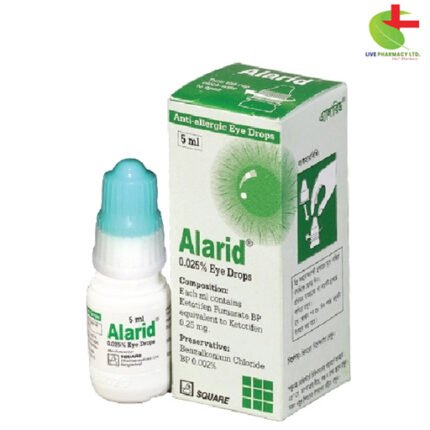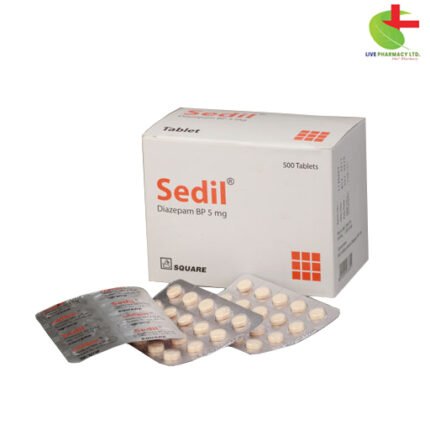Xflam
20.04৳ Strip
- Introducing Xflam: your go-to solution for osteoarthritis relief and management of rheumatoidal disorders.
- Effective acute relief from menstrual pain, headaches, and fever.
- Powered by Dexibuprofen, a potent non-steroidal anti-inflammatory drug.
- Tailored dosage recommendations for individual needs.
- Trust us for safe and effective pain management solutions.
 Brand
Brand
|
Square Pharmaceuticals PLC |
|---|---|
 Generics
Generics
|
Dexibuprofen |
Out of stock
Indicati
- Introducing Xflam: your go-to solution for osteoarthritis relief and management of rheumatoidal disorders.
- Effective acute relief from menstrual pain, headaches, and fever.
- Powered by Dexibuprofen, a potent non-steroidal anti-inflammatory drug.
- Tailored dosage recommendations for individual needs.
- Trust us for safe and effective pain management solutions.
ons
Xflam serves as a remedy for various conditions, including:
- Easing the signs and symptoms associated with osteoarthritis.
- Managing rheumatoidal disorders like osseous rheumatism, ankylosing spondylitis, juvenile arthritis, muscular rheumatism, and degenerative joint diseases.
- Providing acute relief from painful menstruation (primary dysmenorrhea).
- Alleviating common headaches and fever.
- Offering symptomatic relief from mild to moderate pain, such as muscle pain, headaches, and dental pain.
- Acting as an adjunctive treatment for common cold and influenza accompanied by headaches.
Pharmacology
Dexibuprofen (S (+)-ibuprofen) is recognized as the pharmacologically active enantiomer of racemic ibuprofen. Functioning as a non-steroidal anti-inflammatory drug (NSAID) with analgesic properties, Dexibuprofen, like ibuprofen, operates by inhibiting prostaglandin synthesis.
Pharmacokinetics
Dexibuprofen is primarily absorbed from the small intestine. Following metabolic transformations in the liver (hydroxylation, carboxylation), the pharmacologically inactive metabolites are entirely excreted, predominantly through the kidneys (90%), with some excretion occurring via bile. With an elimination half-life ranging from 1.8 to 3.5 hours and approximately 99% plasma protein binding, Dexibuprofen achieves peak plasma levels about 2 hours post oral administration. Co-administration with food delays peak concentrations and slightly reduces maximum plasma levels, albeit without clinical significance.
Dosage & Administration
Dosage adjustments should align with the severity of the syndrome and the patient’s symptoms. For chronic pain, the dosage should be titrated to the lowest effective dose.
The recommended dosage ranges from 600 to 900 mg of Dexibuprofen daily, administered in 2 to 3 divided doses. In acute disorders or exacerbations, the dosage may temporarily increase to 1200 mg daily. The maximum daily dose is 1200 mg.
For dysmenorrhea, a dosage of 600 to 900 mg of Dexibuprofen per day is recommended, divided throughout the day.
Interactions
Xflam exhibits similar drug interactions to racemic ibuprofen. Notable interactions occur with anticoagulants, hydantoins, sulfonamides, ticlopidine, lithium, other NSAIDs, ACE inhibitors, beta-blockers, cyclosporine, tacrolimus, corticosteroids, digoxin, methotrexate, pentoxyfilline, phenytoin, probenecid, sulfinpyrazone, sulfonylureas, thiazides, thiazide diuretics, and zidovudine.
Contraindications
Dexibuprofen is contraindicated in patients with a history of hypersensitivity to Dexibuprofen, NSAIDs, or any component of the product. It is also contraindicated in patients experiencing asthma attacks, bronchospasms, acute rhinitis, urticaria, or edema following the use of similar drugs (e.g., aspirin or other NSAIDs). Additional contraindications include active or suspected hemorrhage, Crohn’s disease or ulcerative colitis, serious heart diseases, kidney function impairment (GFR <30ml/min), and liver function impairment.
Side Effects
Clinical observations suggest that adverse effects of Xflam are akin to those of racemic ibuprofen. Common side effects encompass dyspepsia, diarrhea, fatigue, headache, nausea, vomiting, abdominal pain, and hypersensitivity reactions such as bleeding and ulcers.
Pregnancy & Lactation
While no teratogenic effects have been observed in animal studies with dexibuprofen or ibuprofen, usage during pregnancy should be avoided due to potential impacts on fetal cardiovascular development (closure of ductus arteriosus). Similarly, caution is advised during lactation, as racemic ibuprofen has been detected in negligible amounts in breast milk.
Precautions & Warnings
Exercise caution when prescribing Xflam to patients with bronchial asthma, chronic pulmonary diseases, allergies, hepatic, renal, or cardiac insufficiency, hypertension, systemic lupus, or other autoimmune diseases. Special attention should be given to patients with hemorrhagic conditions such as gastro-duodenal ulcers, ulcerative colitis, Crohn’s disease, or alcoholism, as allergic reactions may occur, necessitating immediate discontinuation.
Use in Special Populations
Adjust dosage cautiously in patients with hepatic or renal impairment. Xflam is not recommended for use in patients with severe liver or kidney dysfunction.
Overdose Effects
Xflam exhibits low acute toxicity, with symptoms typically manifesting at doses between 80 and 100 mg/kg body weight. Treatment for overdose should be symptomatic, as there is no specific antidote. Activated charcoal may be administered in cases of significant ingestion, and vomiting induction is recommended within 60 minutes post-ingestion for life-threatening quantities.
Therapeutic Class
Xflam belongs to the therapeutic classes of drugs for osteoarthritis, drugs used for rheumatoid arthritis, and non-steroidal anti-inflammatory drugs (NSAIDs).
Storage Conditions
Store Xflam below 30°C, away from light, and out of the reach of children.













Reviews
There are no reviews yet.